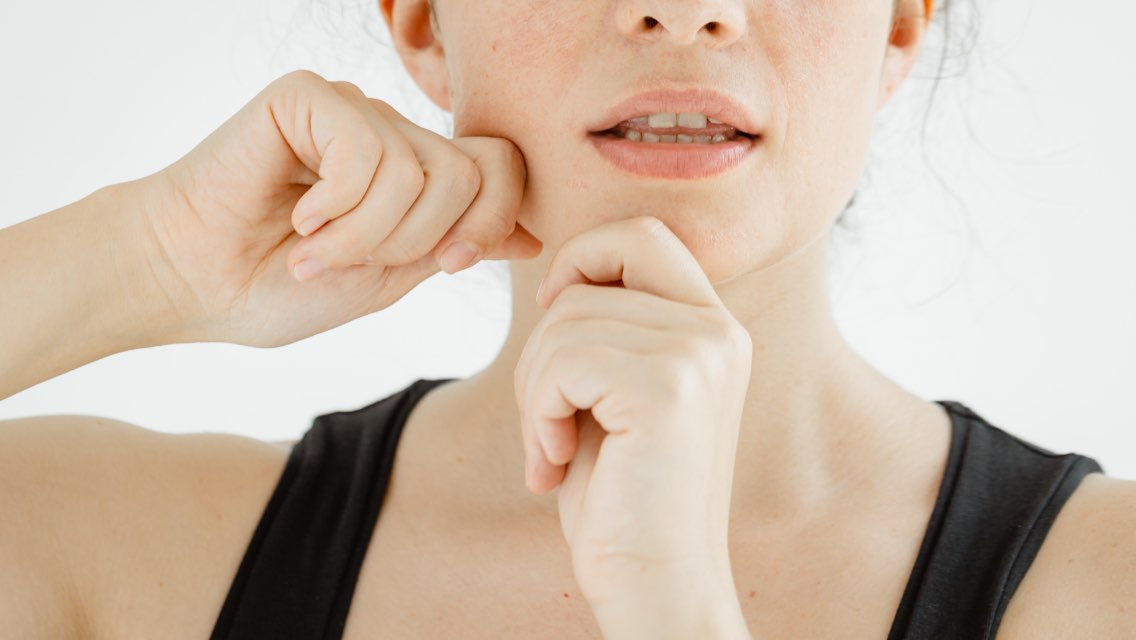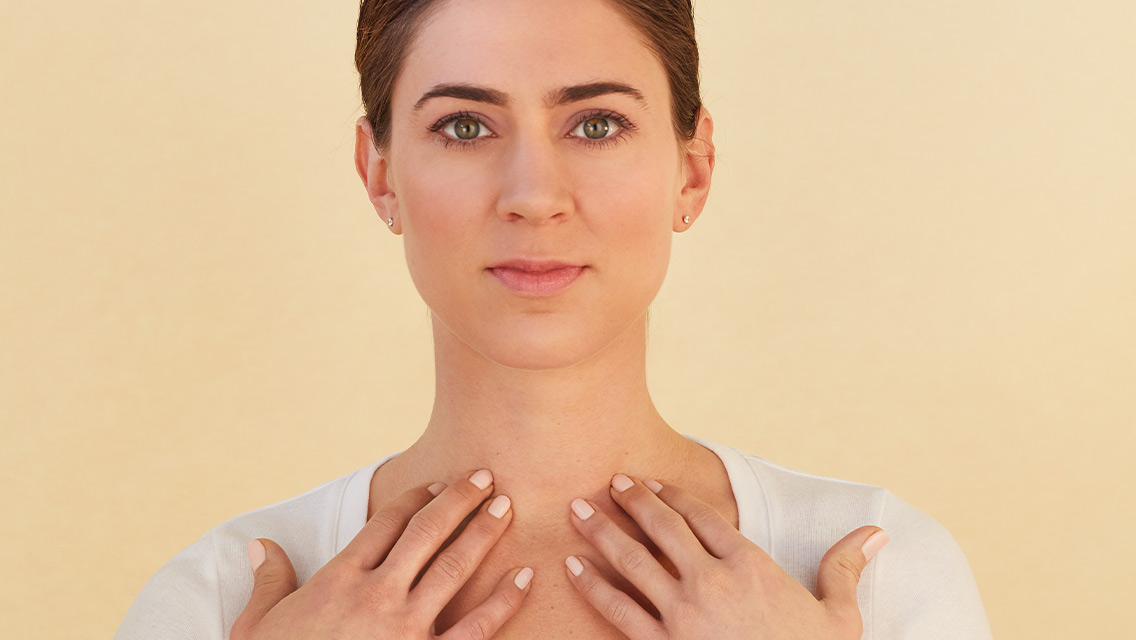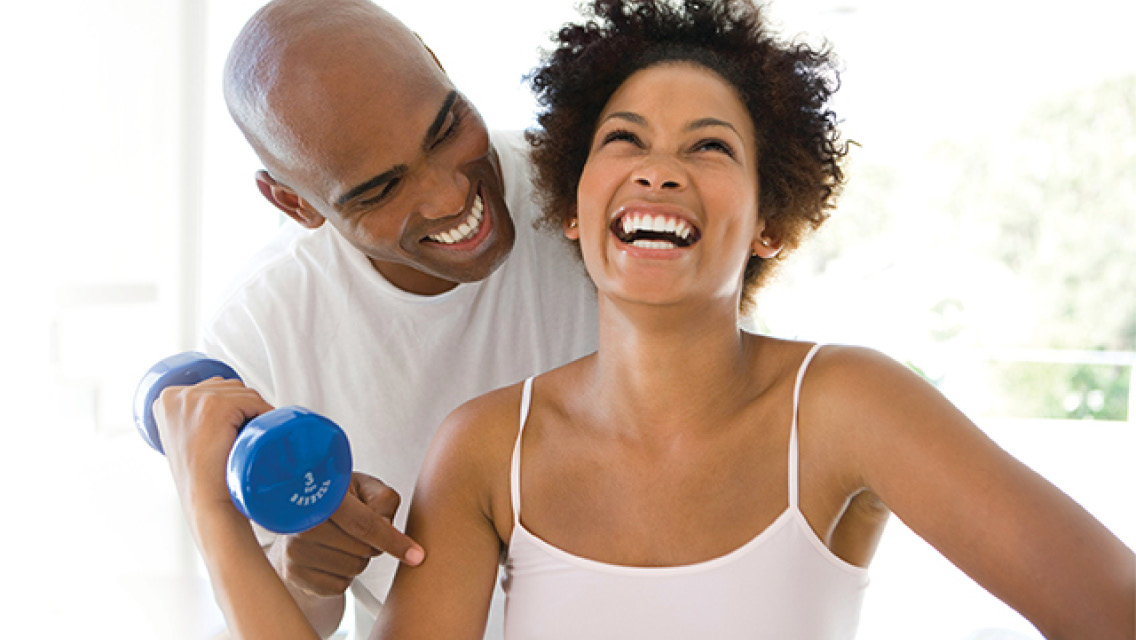Does your face need a workout?
A growing number of yoga practitioners say “yes,” claiming that exercising your facial muscles is just good common sense and that their classes are a non-invasive, cost-effective alternative to Botox or surgery. The trend is growing: On social media, you may have seen posts about “face yoga,” “face aerobics,” or “facial exercises,” or perhaps you’ve read about celebrities like Meghan Markle, Gwyneth Paltrow, and Madonna touting the benefits.
According to a study by dermatologists at Northwestern University Feinberg School of Medicine, they might be onto something.
“Now there is evidence that facial exercises may improve facial appearance and reduce some visible signs of aging,” says lead author Dr. Murad Alam, vice chair and professor of dermatology at Northwestern University Feinberg School of Medicine and a Northwestern Medicine dermatologist. “The exercises enlarge and strengthen the facial muscles, so the face becomes firmer and more toned and shaped like a younger face.”
For the first-of-its-kind study, which was published in JAMA Dermatology in January 2018, 16 women between the ages of 40 and 65 were given a 30-minute facial-exercise routine consisting of 32 distinct exercises. After two 90-minute training sessions, the women were instructed to repeat the exercises on their own every day for eight weeks, and every other day for another nine.
At the study’s end, an independent panel of dermatologists rated the participant’s before and after photographs using the Merz-Carruthers Facial Aging Photoscales, a standardized facial aging scale. On average, the panel rated the after photographs as looking three years younger than the before photographs.
“Northwestern didn’t think they were going to see results,” says Gary Sikorski, founder of Happy Face Yoga and a coauthor of the study. “So, when the results came in, they were blown away. Across the board every single person in the study saw improvements.”
An Alternative to Facelifts
Sikorski, who has been teaching face yoga for more than 16 years, says the protocol works based on the same principles of resistance training that we apply to other muscles in our body. Participants used their own hands, fingers, and even teeth to apply gentle pressure to the cheeks, ocular muscles, and other areas of the face, he explains, effectively retraining them to become firm and strong again.
The exercises help increase circulation to the face, as well as improve skin elasticity and collagen production. “The skin on the face is attached to muscles, so when the muscles of the face are strengthened and toned, the skin becomes tightened,” explains Sikorski, who started teaching face yoga after witnessing his own personal transformation. “I never say it removes wrinkles — that is a fallacy. But the exercises help to widen the eyes, firm the cheeks, turn up mouth corners, and soften fine lines. If you stick with the program, it can provide a natural face lift.”
Joee Nelson, master aesthetician at LifeSpa in Eden Prairie, Minn., describes the Northwestern study results as “fascinating” and says she can see how face yoga would help from a preventative and corrective standpoint.
“I think strengthening your muscles from the inside out could probably help a lot over the long term,” says Nelson. “Seeing how far you can take your skin at home versus spending time and money doing medical treatments or surgeries — there’s a lot of value in that.”
From derma rollers to at-home microdermabrasion, Nelson has seen a lot of trends come and go over the years, but thinks face yoga is one with staying power. She likes the idea of having something to recommend to clients looking for a self-care routine to complement the treatments they may receive in the spa.
Consistency is Key
For meaningful results, Sikorski recommends committing to face yoga for 15 to 20 minutes a day for six to 10 weeks; in that amount of time, most people can complete six or seven exercises, he says.
Of course, the more time you put in, the more you’ll get out of it. “Take it slow just as you would any exercise program,” says Sikorski. “You don’t want to strain your facial muscles.”
Results will vary depending on a person’s age and how “fit” their face is at the start of the program. After about 10 weeks, however, most people can drop down to two or three times a week for maintenance.
Koko Hayashi, founder of the LA-based Koko Face Yoga, agrees that consistency is important. While face yoga has only recently begun to gain attention here in the United States, it’s been popular in Hayashi’s native Japan for more than a decade.
Before Hayashi starts teaching strengthening exercises to her clients, the first thing she addresses is facial posture. “How you move your facial muscles when your face is resting, and when you eat, drink, and yawn is super important,” says Hayashi.
There are dozens of muscles in the face, but most people only actively use about half of them, she explains. The intent of face yoga is to wake up your sleeping muscles and relax the ones that are overworked.
Hayashi recommends doing facial exercises — including those featured in her app, Koko Face Yoga —in bite-size increments. Once you learn the exercises, they’re easy to incorporate into a daily routine; some of her clients add them to their skin-care regimens. Others tack them onto the end of a meditation session. “The great thing about face yoga is you can do it anywhere,” she says.
More Than a Beauty Treatment
Besides making people appear younger, face yoga may improve overall health by helping people to breathe better, says Hayashi. She explains that poor tongue posture is one of the main reasons people default to chronic mouth breathing, which is known to create health issues.
When the tongue is on the bottom of the mouth air flow is restricted, says Hayashi. Restoring the tongue to its natural position on the roof of your mouth also restores nasal breathing.
“Nasal breathing is really important for overall health,” agrees LeeAnn Kyriakides, MS, a certified orofacial myologist and speech pathologist based in Maple Grove, Minn. “Tongue resting posture matters because breathing through the nose is much healthier for the body than breathing through the mouth.”
In her clinic, Kyriakides works with children and adults who have weak or underdeveloped orofacial muscles to strengthen the muscles in their mouth, lips, tongue, and cheeks. Tongue posture and function is something she always works on because they affect everything from eating, drinking, and swallowing to breathing and speech. Many of her referrals are from dentists and orthodontists.
While she can’t speak to the benefits of face yoga, Kyriakides says improved strength and coordination of the muscles in the cheeks and mouth is a nice — albeit unintentional — benefit.
“My focus is function, but I do see changes in people’s faces once they establish proper muscle function. I see that every day in my practice,” says Kyriakides. “If you’re exercising your face your muscles are going to be stronger.”
She cautions that people who have orofacial function disorders such as TMJ disorder should seek the help of a certified therapist or doctor before attempting a facial exercise program, as without proper diagnosis and treatment, certain exercises could exacerbate symptoms.
For her part, Nelson says that for those willing to put in the time, face yoga is a natural extension of their fitness routine. She thinks some of her clients would be willing to make the effort.
“We carry so much stress in the face,” says Nelson. “To work through that like you would with your body is really important. We spend so much time and money on things like shoes and clothes, but they will go out of style. Your face you wear forever.”
4 Face Yoga Exercises
The following exercises are part of a larger face yoga program developed by Gary Sikorski of Happy Face Yoga. Sikorski recommends doing these exercises daily for six to 10 weeks, then dropping down to two or three times a week for maintenance. Every face is different, says Sikorski, but most people will be able to decrease frequency after six, eight, or 10 weeks of consistent practice.
The Forehead Smoother
This exercise trains the forehead, helping to smooth lines, lift the eyebrows, and strengthen and prevent drooping eyelids.
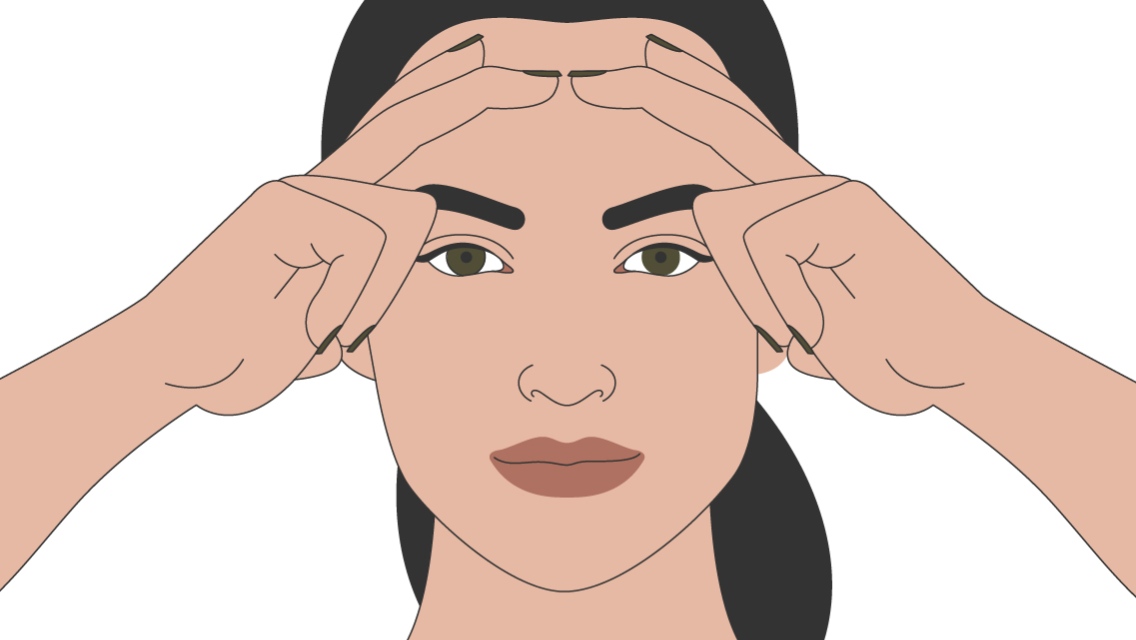
Instructions
- While maintaining a smile on your face, place your index and middle fingers across your forehead at the hairline and press the entire length of your fingers firmly into your scalp.
- Slowly slide your fingers down your forehead toward your eyebrows, flexing your eyebrows tightly upward so that you are lifting your eyebrows up against the pressure of your fingers.
- You should feel a tight band of pressure across your brows. Hold the position for 10 seconds, take a deep breath, and then release.
- Repeat three times, but on the third rep, hold for 20 seconds.
- Repeat the entire sequence one more time.
The Cheek Lifter
Gravity ages us by pulling our cheeks downward. This exercise strengthens the cheek muscles and upper lip to lift cheeks back up.

Instructions
- Open your mouth and form a long “O,” pulling your upper lip over your upper teeth. Then smile to lift your cheek muscles.
- Lightly place your index fingers on the top part of your cheeks, right on top of the cheek muscles, directly under the eyes.
- Relax the cheek muscles, allowing them to return to their original, relaxed position.
- Smile again to push those cheek muscles back up. Visualize pushing the muscles up toward your eyes as you smile.
- Congratulations! You have just completed one cheek “pushup.” Now, do 10 more; on the tenth repetition, hold your cheek muscles up as high as you can for 20 seconds.
- Repeat the sequence two more times.
Scooping Jaw and Neck Firmer
This exercise strengthens the muscles on, around, and under the chin and jawline to help tone sagging cheeks and jowls.
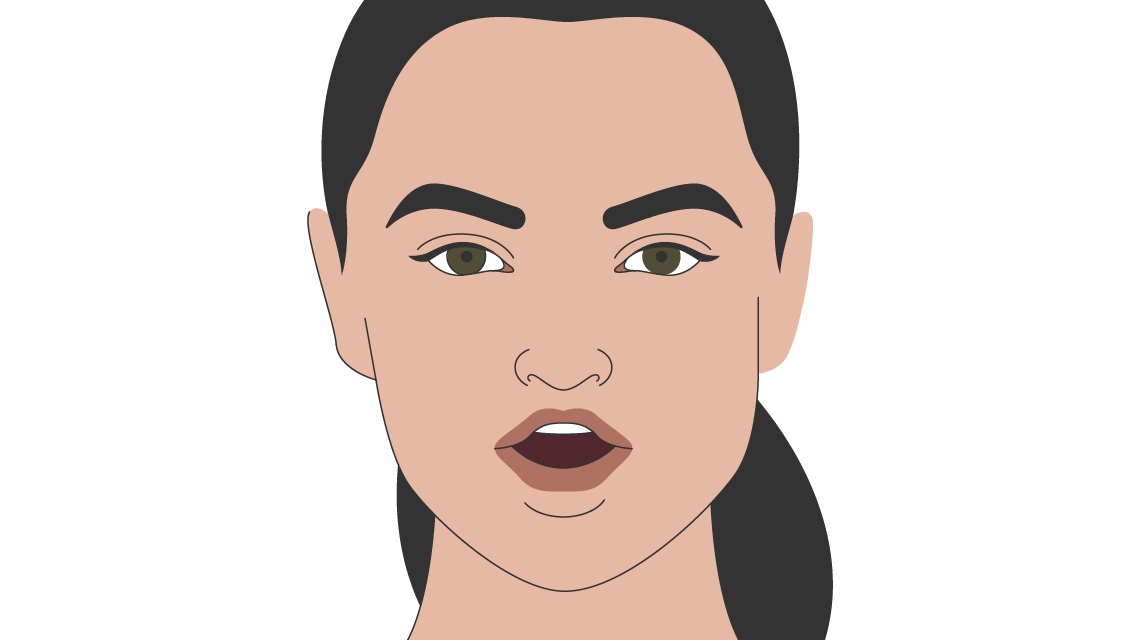
Instructions
- While maintaining a smile on your face, open your mouth and make an “ahh” sound, pulling your lower lip over your lower teeth and holding the position tightly.
- Extend your lower jaw forward. Using only your lower jaw, scoop up very slowly as you close your mouth. Visualize using your jaw to scoop up something very heavy.
- Open your mouth and scoop again. Pull your chin up about an inch each time you scoop, tilting your head backward.
- Open and close your lower jaw for 10 repetitions total. On the final repetition, your chin should be pointed toward the ceiling. Keep the chin extended and hold the position tightly for 20 seconds.
- Repeat the sequence two more times.
The Lower Eyelid Firmer
This exercise helps strengthen the upper and lower eyelids, increasing blood circulation to the eye area and creating the appearance of bigger, brighter eyes.
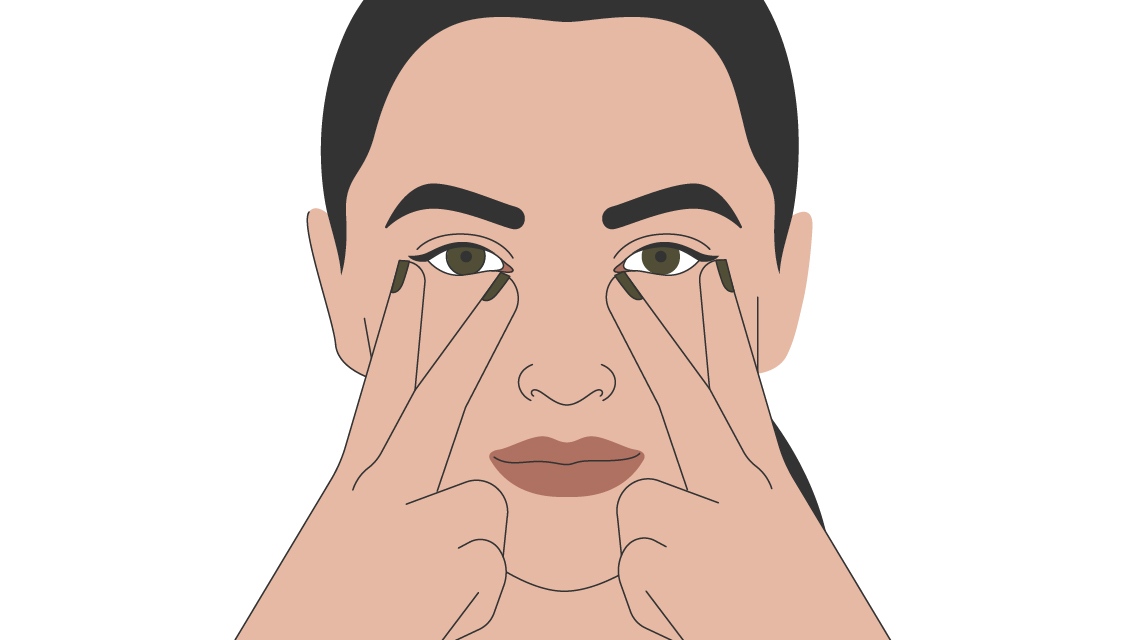
Instructions
- While maintaining a smile on your face, place your middle fingers near the inner sides of your eyes, resting them just along the sides of the very upper part of your nose.
- Place your index fingers just outside the eyes, so that they are holding the orbicularis occuli, the big circular muscle that surrounds the eyes, in place.
- Squint up and release 10 times, keeping your upper eyelids as wide open as possible. (This will get easier with practice.) Hold the final repetition for 20 seconds.
- Repeat the sequence two more times.
